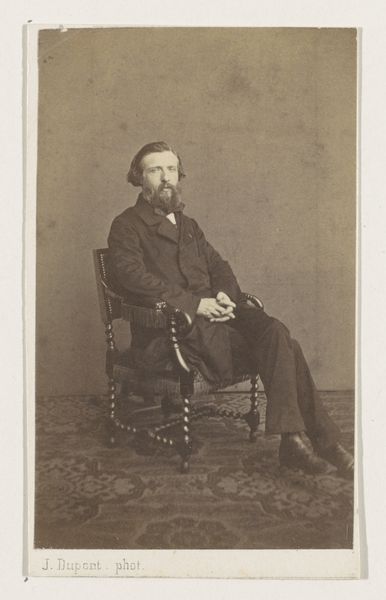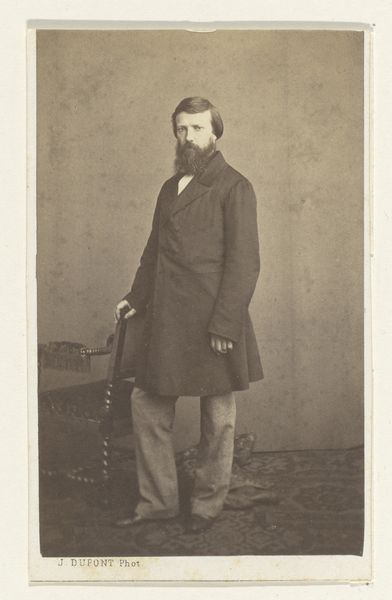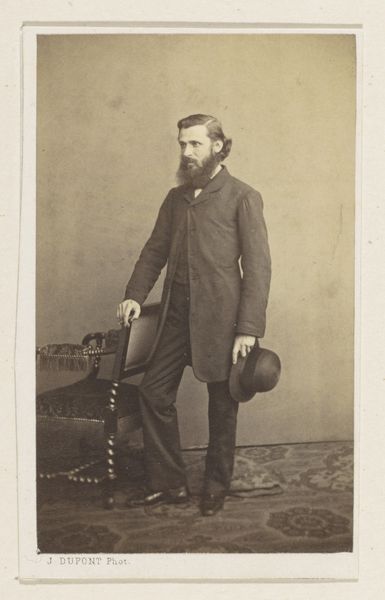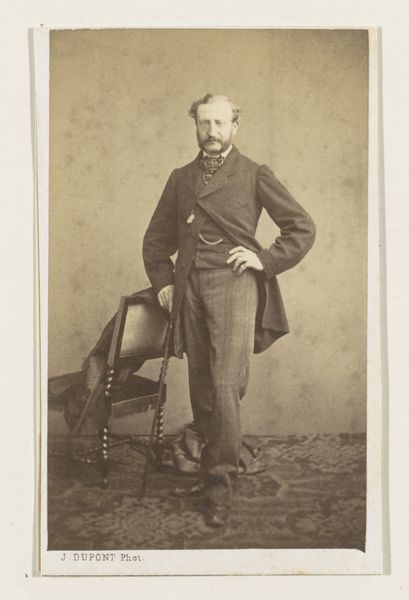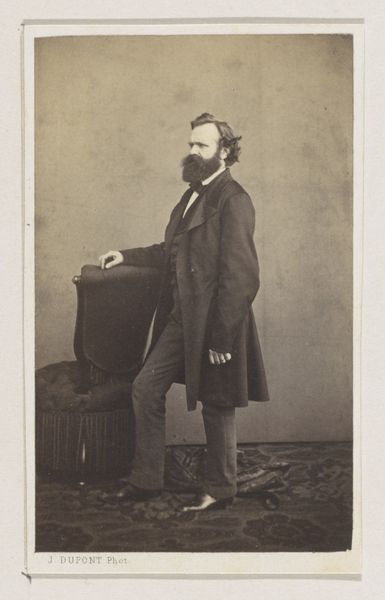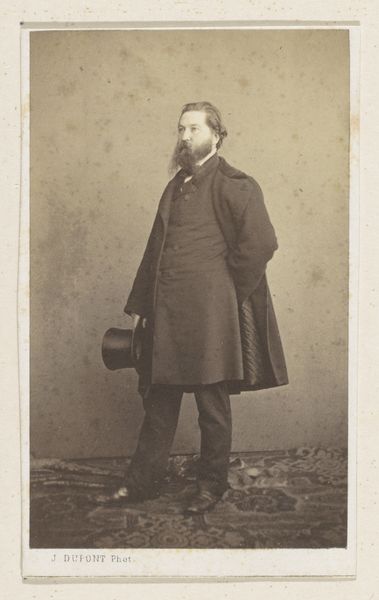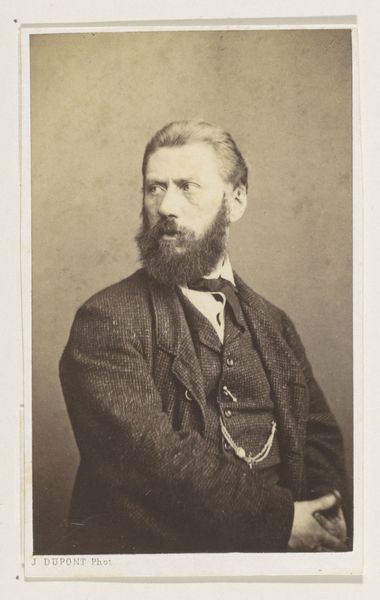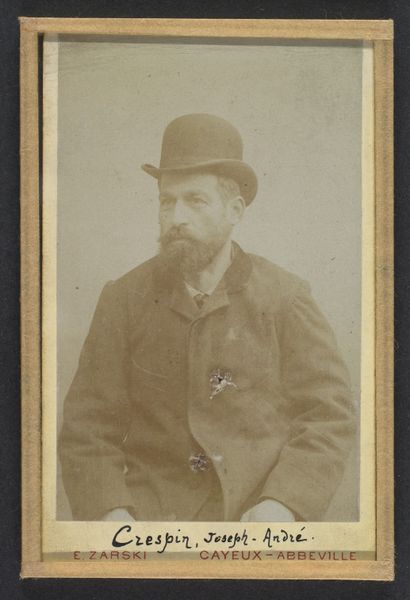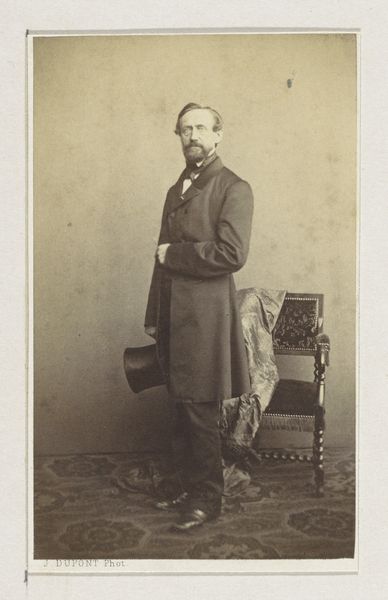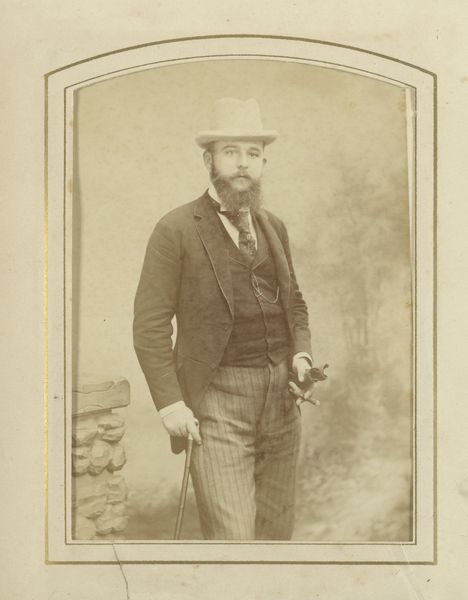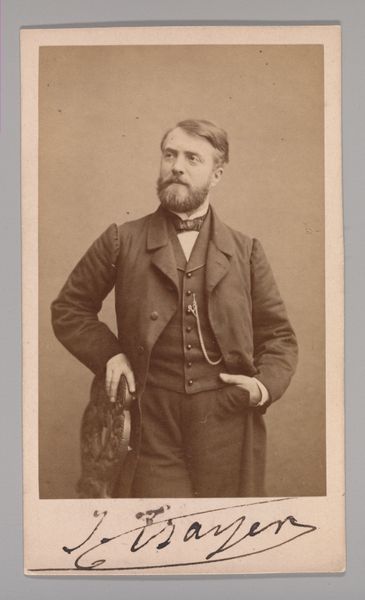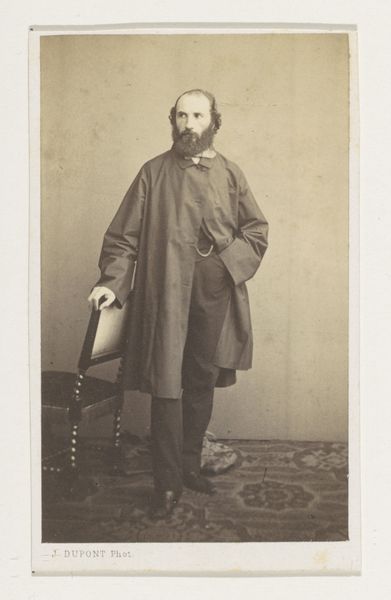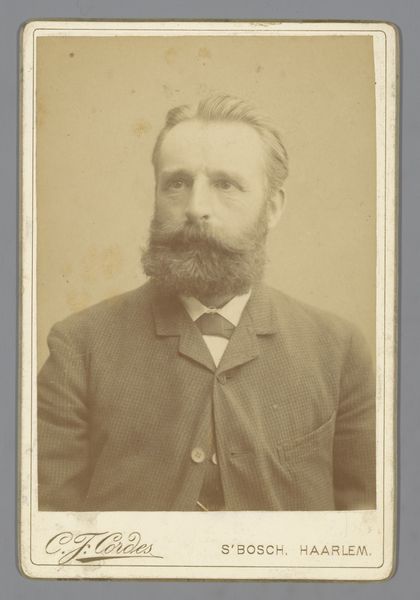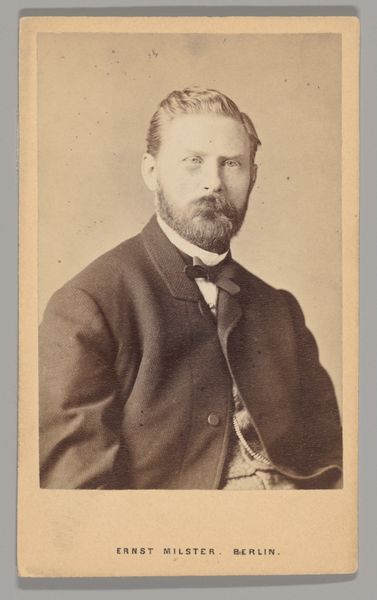
Dimensions: height 101 mm, width 61 mm
Copyright: Rijks Museum: Open Domain
Curator: This photograph, taken in 1861, presents a full-length portrait of the painter Adolf Alexander Dillens. The photographer is Joseph Dupont, and the work is a gelatin silver print. Editor: My first thought is that the sepia tones create a sense of quiet dignity, almost a studied stillness. The man and the subdued carpet and backdrop are a collection of similar tonal variations. It’s quite formal and restrained, don't you think? Curator: Indeed. Notice the symbolism in his pose and attire. He leans slightly on a chair, suggesting both stability and perhaps a hint of weariness, as any person living a creative life could appreciate. The waistcoat and watch chain intimate a certain level of bourgeois respectability, a visible demonstration of prosperity in a time of great change. Editor: Formally, there's a real tension between the sharp details of his face and beard versus the soft focus throughout the rest of the image. It makes his gaze—slightly averted, I think—the dominant focal point. That, and the placement of his hand on the chair is an artful convergence of line and form that seems to quietly assert dominance. Curator: That "assertion," I think, is critical to understanding its cultural moment. Photography was both democratizing art and solidifying the image of the modern artist. A portrait like this became a vital element for creating and sustaining a personal artistic mythos and demonstrating artistic authority in his historical context. Editor: There's almost a painting-like quality about it, which you see often in photography from this era. Compositionally it seems calculated to emulate the established conventions of portraiture that were, at that time, exclusive to painting. Dupont seems very attuned to established visual languages. Curator: Right, and those artistic "conventions" communicate a particular idea about the subject. It says "painter," but also says "respectable gentleman," linking the artist with the cultural institutions of his day. I wonder what Dillens himself thought about how he was being presented in this picture? Editor: Fascinating how a simple photographic portrait contains all these visual and cultural layers. You really have given me new insights here today! Curator: Likewise. It reminds me how portraits such as these encapsulate fleeting moments, offering lasting insight into cultural values of identity and legacy.
Comments
No comments
Be the first to comment and join the conversation on the ultimate creative platform.
